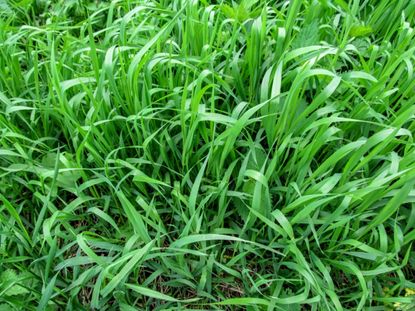Killing Quackgrass: Tips For Getting Rid Of Quackgrass


Eliminating quackgrass (Elymus repens) in your garden can be tricky but it can be done. Getting rid of quackgrass requires persistence. Keep reading to learn how to get rid of quackgrass from your yard and flower beds.
What Does Quackgrass Look Like?
Quackgrass identification is pretty easy. As suggested by its name, quackgrass is a grass. The leaves will be broader than lawn type grasses and the grass blades will also have a rough, almost burr-like feel to them when you run your fingers along the blade. The roots will be thick and white. If the quackgrass is pulled out of the ground, you may notice that the roots break easily and often pieces of the roots will stay in the soil after the plant is removed.
How to Get Rid of Quackgrass
As with any invasive weed, the best way to control quackgrass is to make sure that you do not have it in the first place. Any plants that you bring home from stores or nurseries must be carefully checked for quackgrass and remove the quackgrass plant and roots completely if you find it in the pot. Another essential part of getting rid of quackgrass is to act quickly when you do find it in your garden. Quackgrass moves quickly through any soil, but moves like lightening through loamy or sandy soil. Check your beds often for the appearance of this weed. If quackgrass is found, remove the quackgrass plant and roots as best possible. Any roots left in the ground will grow new plants. Check the area daily for any new growth and remove any new quackgrass found as soon as possible. If your flower beds have become overrun with quackgrass, manual pulling is really your only option for getting rid of quackgrass. Unfortunately, killing quackgrass is not as easy as simply spraying an herbicide. They do not respond to selective weed killers and your only chemical option for eliminating quackgrass is to use a non-selective weed killer. These weed killers will get rid of the quackgrass, but will also kill any plants the quack grass is growing near. If a bed becomes badly infested with quackgrass, you may need to replant the bed.
- Start by removing any plants you wish to keep.
- Check the soil carefully for any traces of quackgrass roots and remove if found.
- Next, you will be killing the quackgrass in the bed. Treat the bed with a non-selective weed killer, chemical or boiling water. Wait one week and treat the bed again.
Wait one more week and if quackgrass is starting to grow again, repeat the above steps again. While this may seem a bit extreme in order to control quackgrass, this is the only way to ensure that you have eliminated this stubborn weed. The steps for how to get rid of quackgrass are somewhat time consuming, so it is important to treat this weed early and fast. The reward is that you never have to worry about getting rid of quackgrass that has taken over a once beautiful flower bed. Note: Chemical control should only be used as a last resort, as organic approaches are more environmentally friendly.
Gardening tips, videos, info and more delivered right to your inbox!
Sign up for the Gardening Know How newsletter today and receive a free download of our most popular eBook "How to Grow Delicious Tomatoes."

Heather Rhoades founded Gardening Know How in 2007. She holds degrees from Cleveland State University and Northern Kentucky University. She is an avid gardener with a passion for community, and is a recipient of the Master Gardeners of Ohio Lifetime Achievement Award.
-
 Grow a Bathroom Oasis: 8 Best Bathroom Plants With No Light or Low Light
Grow a Bathroom Oasis: 8 Best Bathroom Plants With No Light or Low LightSome apartment dwellers grow the best bathroom plants with no light or low light. Read how one of our favorite plant lovers does it in the big city.
By Teo Spengler
-
 "My Worst Mistake" – Gardeners Share 10 Hard-Learned Lessons
"My Worst Mistake" – Gardeners Share 10 Hard-Learned LessonsGardeners never stop learning, and sometimes our mistakes are the best teachers. But why not save time and heartache by learning from other gardeners' failures?
By Melanie Griffiths